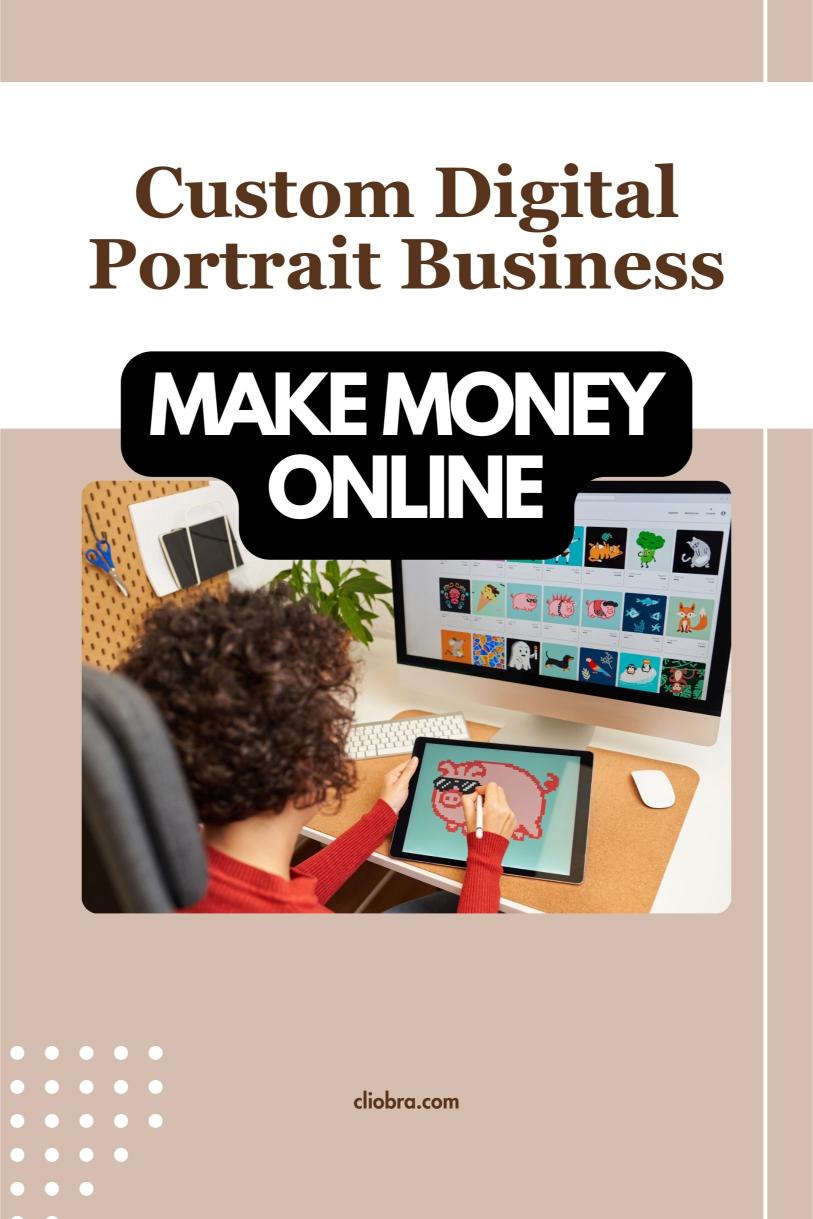Last Updated on October 22, 2024 by Arif Chowdhury
Ever stared at your digital art and thought, “Man, I could make some serious cash with this”?
Well, you’re not alone.
The digital art market is booming, and custom portraits are the hot ticket.
Let’s dive into how you can turn those pixels into profit.
Why Custom Digital Portraits?
Custom digital portraits are blowing up right now.
People love personalized stuff, and what’s more personal than your own face?
Plus, with social media, everyone wants that perfect profile pic.
According to a recent study, the global digital art market is expected to reach $13.8 billion by 2028.
That’s a lot of zeroes, folks.
Getting Started: The Basics
First things first, you need skills.
If you can barely draw a stick figure, this might not be your jam.
But if you’ve got talent, let’s roll.
Here’s what you need:
- A decent computer or tablet
- Drawing software (Procreate, Photoshop, whatever floats your boat)
- A website or online platform to sell your work
- A whole lot of hustle
Picking Your Niche
Don’t try to be everything to everyone.
Find your thing and own it.
Maybe you’re all about:
- Pet portraits
- Anime-style characters
- Corporate headshots with a twist
- Fantasy character designs
Pick something you love and get really freaking good at it.
Setting Up Shop
You’ve got options:
- Build your own website
- Use platforms like Etsy or Fiverr
- Leverage social media (Instagram, TikTok)
Each has pros and cons.
Your own site gives you control but requires more work.
Platforms have built-in audiences but take a cut.
Social media is free but competitive as hell.
Mix and match to find what works for you.
Pricing Your Art
This is where most people mess up.
Don’t undersell yourself.
Factor in:
- Time spent on each piece
- Your skill level
- Market rates
Start with competitive pricing and adjust as you go.
Remember, you’re not just selling a picture – you’re selling an experience.
Marketing Like a Boss
You could be the next Picasso, but if no one knows you exist, you’re toast.
Here’s how to get noticed:
- Showcase your best work: Quality over quantity, always.
- Engage with your audience: Reply to comments, ask for feedback.
- Collaborate with other artists: Cross-promotion is gold.
- Use hashtags strategically: Don’t spam, but make yourself discoverable.
- Run contests or giveaways: Everyone loves free stuff.
The Power of Before and After
People love a good transformation.
Show the process:
- Initial sketch
- Line work
- Color and shading
- Final touches
This not only showcases your skills but also justifies your pricing.
Dealing with Clients
Some clients are a dream, others… not so much.
Set clear expectations from the start:
- How many revisions are included?
- What’s the turnaround time?
- What format will they receive the final product in?
Be professional, even when clients are driving you nuts.
Word of mouth is powerful in this game.
Scaling Your Business
Once you’ve got a steady flow of clients, it’s time to level up.
Consider:
- Hiring other artists to help with workload
- Offering different tiers of service (basic, premium, deluxe)
- Creating digital products (brushes, tutorials) as additional income streams
A survey found that 68% of digital artists who scaled their businesses saw a 50% increase in revenue within the first year.
That’s some serious growth potential.
Staying Inspired and Avoiding Burnout
Churning out portrait after portrait can get old fast.
To keep your creative juices flowing:
- Take on personal projects
- Experiment with new styles
- Attend art workshops or conventions
- Follow other artists for inspiration (but don’t copy)
Remember why you started this in the first place – because you love creating art.
Don’t lose that spark.
Handling Finances
This ain’t just about making pretty pictures – it’s a business.
Get your money right:
- Track your income and expenses
- Set aside money for taxes (yeah, it sucks, but it’s necessary)
- Invest in your skills and equipment
Consider hiring an accountant if numbers aren’t your strong suit.
Dealing with Copycats
In the digital world, theft is a real issue.
Protect your work:
- Watermark your images
- Use low-res samples for display
- Copyright your designs
If someone steals your stuff, don’t be afraid to call them out.
Your art is your livelihood – defend it.
Embracing Feedback and Growth
Not every piece will be a masterpiece.
Learn from criticism:
- Ask clients for honest feedback
- Join artist communities for peer reviews
- Analyze your most successful pieces
Growth is a process, not an event.
Keep pushing yourself to improve.
The Future of Digital Portraits
The industry is evolving fast.
Stay ahead of the curve:
- Explore AI-assisted tools (but don’t rely on them entirely)
- Consider offering NFTs of your work
- Keep an eye on emerging platforms and technologies
A recent report suggests that AI-enhanced digital art tools could increase artist productivity by up to 30%.
That’s a game-changer if you know how to use it right.
Conclusion: Your Canvas Awaits
Selling custom digital portraits online isn’t just a pipe dream.
It’s a legit business opportunity with serious potential.
But it’s not a get-rich-quick scheme.
It takes skill, hustle, and a whole lot of patience.
If you’re ready to put in the work, the rewards can be massive.
Not just financially, but creatively too.
So fire up that tablet, sharpen your digital pencils, and get creating.
Your next masterpiece (and paycheck) is waiting.
